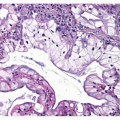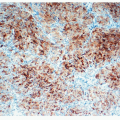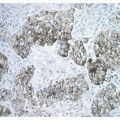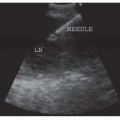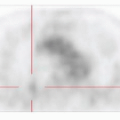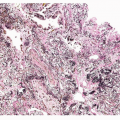New Staging System for Lung Cancer
Philip T. Cagle
THE NEW TNM STAGING SYSTEM FOR LUNG CANCER
As noted in the previous chapter, the TNM staging system for lung cancer, last revised in 1997, was criticized because it was based on a limited number of patients (5,319) from one institution (MD Anderson Cancer Center). This meant that many subgroups of patients were small and that evidence-based criteria and validation of stage groupings were not ideal. Likewise, there were questions of whether the findings at one institution could be applied to multiple institutions throughout the world. In 1999, the International Association for the Study of Lung Cancer (IASLC) began an ambitious project to study a larger, more representative database to propose criteria for a revised TNM staging system. Their proposals were published in the Journal of Thoracic Oncology in 2007 and later adopted by American Joint Committee on Cancer (AJCC) and the Union Internationale Contre le Cancer.1,2,3,4,5,6,7,8,9,10,11,12 and 13 In October 2009, the new TNM staging for lung cancer was published in the 7th edition of the AJCC Staging Manual, and it was put into practice in January 2010.14,15
After exclusions for various reasons, 81,015 patients from 45 sources in 20 countries on four continents were included. These included 67,725 patients with non-small cell lung carcinoma (NSCLC) and 13,290 cases of small cell carcinoma. Of the NSCLC cases, 53,640 were clinically staged, 33,933 were pathologically staged, and 20,006 cases were both clinically and pathologically staged. The geographic sources of the NSCLC cases were 40,059 from Europe, 12,178 from North America, 10,216 from Asia, and 5,272 from Australia.1,2,3,4,5,6,7,8,9,10,11,12,13,14 and 15
The new TNM staging system classified T, N, and M categories into stage groups according to similar survivals which resulted in some changes from the 1997 TNM staging system. However, many aspects of the 1997 staging system were found to be reliable and, for example, the N categories were found to clearly identify prognostically distinct groups of patients.1,2,3,4,5,6,7,8,9,10,11,12,13,14 and 15 In contrast to previous editions, TNM staging of small cell carcinoma and carcinoid tumors is included using the same TNM staging as for the NSCLC.6,8 In addition, the IASLC has proposed new international lymph node map to reconcile differences between older maps.13,14 and 15
Stay updated, free articles. Join our Telegram channel

Full access? Get Clinical Tree


